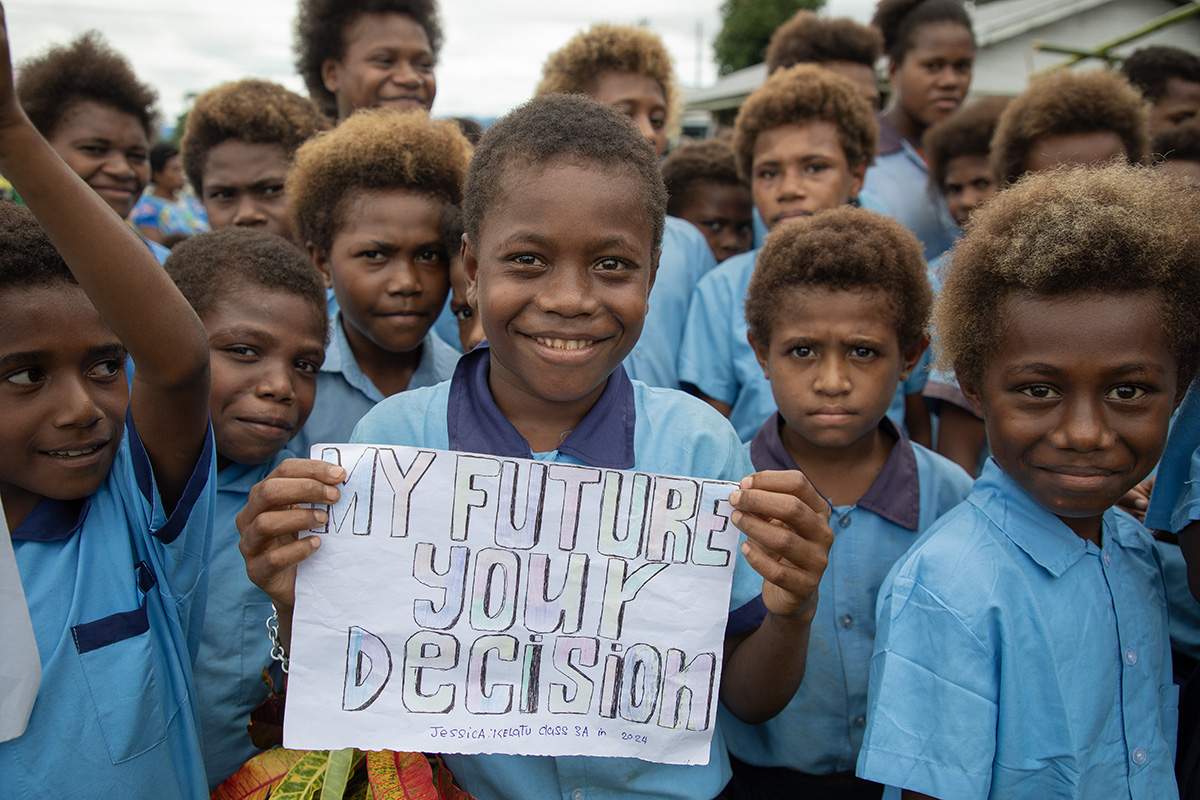The targets lay an important foundation for Papua New Guinea achieving sustainable environmental management and biodiversity conservation by 2030.

The new National Biodiversity Targets were launched at a press conference held at CEPA on 14 October 2024
On 14 October 2024, the Conservation and Environmental Protection Authority (CEPA) of the Government of PNG Government reached a major milestone by officially launching its 23 National Biodiversity Targets to achieve its commitments under the Kunming-Montreal Global Biodiversity Framework of the Convention on Biodiversity.
The launching of the targets occurs as Papua New Guinea prepares to participate in the 2024 United Nations Biodiversity Conference of the Parties (COP16) in Bogota, Colombia later this month. Through its Early Action Support Project funded by the Global Environment Facility, UNDP has actively supported CEPA in determining the 23 National Biodiversity Targets, as well as outlining the 195 actions and policy measures prescribed for achieving them.

Papua New Guinea is among the world's 17 megadiverse countries.
“I am very pleased with the hard work, time and dedication put into this by my CEPA officers together with colleagues from other Government agencies, conservation NGOs, civil society, as well as international experts. This has been no easy feat. We know what needs to be done to protect PNG’s biodiversity, and we now need to find the means to achieve it,” stated the Managing Director of CEPA, Mr. Jude Tukuliya, during a press conference held to announce the targets.
The Convention on Biodiversity is the international legal instrument for "the conservation of biological diversity, the sustainable use of its components and the fair and equitable sharing of the benefits arising from the utilization of genetic resources." Entering into force in 1993 after the Rio Earth Summit, it is dedicated to promoting sustainable development. The CBD’s governing body is the Conference of the Parties (COP), which meets every two years to review progress, set priorities and commit to work plans.

Over 90% of Papua New Guineans depend on the country's biodiversity for their daily survival
The Kunming-Montreal Global Biodiversity Framework (GBF) was adopted during the previous COP15 following a four-year consultation and negotiation process. This historic Framework, which supports the achievement of the Sustainable Development Goals and builds on the Convention on Biodiversity’s previous Strategic Plans, sets out an ambitious pathway through 23 global targets to reach the global vision of a world living in harmony with nature by 2050.
COP16 will be the first Biodiversity COP since the adoption of the GBF where governments will review the progress made to implement GBF as well as assess the alignment of National Biodiversity Strategies and Action Plans (NBSAP – a strategy which sets out a conservation road map for a country) with the GBF.

The students of Silanga Primary School in West New Britain Province calling for efforts to conserve the country's biodiversity for future generations of Papua New Guineans in May 2024.
“We are proud to support CEPA with the aligned National Biodiversity Targets as part of the country’s green economy transition,” stated Akiko Yamamoto, UNDP’s Regional Team Leader for Environment and Energy in Asia and the Pacific. “UNDP will continue to provide support to CEPA and the Government of PNG through our new global initiative, the ‘Nature Pledge’. As part of this, we will be initiating two new projects to determine how to finance these targets and prepare the next NBSAP as PNG’s conservation roadmap until 2030.”
In preparation for COP16, CEPA has also worked with the European Union-funded Forestry-Climate Change-Biodiversity (FCCB) programme, which is implemented by Expertise France, to form a Government Delegation with delegates aligned to the 23 National Targets. The delegates will have the required skills and expertise to learn from the other parties present at COP16 and to bring these valuable lessons back to Papua New Guinea. For the first time at COP, Papua New Guinea will also be hosting three side events to promote the country’s nature and biodiversity, sustainable conservation commodities, and the National Forest Monitoring System (NFMS).

Organic products produced by Engan women's organizations supported by UNDP will be displayed at COP16 in Colombia in October
“Upon returning from COP16, a workshop will be organized for the PNG Delegates and the key relevant Government institutions to discuss strategic direction and translate COP16 outcomes into action for PNG,” stated Mr. Alaric Vandenberghe, the EU-FCCB Project Manager for Expertise France. “The workshop will also reflect and explore key resolutions and new commitments from COP16 that will shape PNG’s biodiversity initiatives, aligning them closely with the Global Biodiversity Framework.”
The National Biodiversity Targets were launched on the CBD Website on 14th October; the PNG Delegation will begin their journey to COP16 on 15th October 2024.

 Locations
Locations


